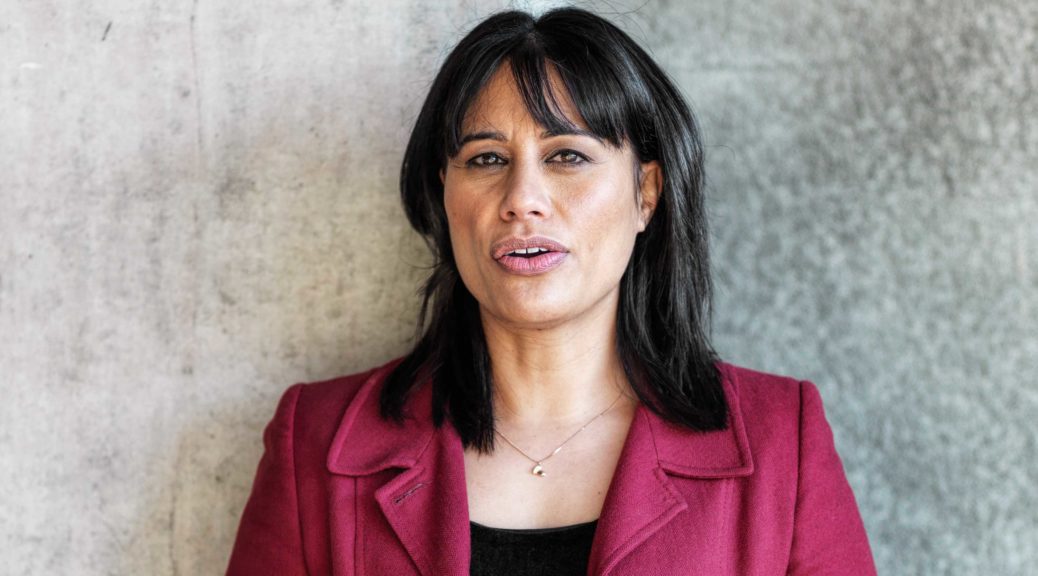DR APRIL BENNETT
Tūwharetoa, Waikato, Tūhoe, Ngāti Raukawa ki te Tonga
School of People, Environment and Planning
How we think and speak about our environment, including the cultural viewpoint through which we see it, can fundamentally affect decisions around how we use it. Is a waterway running into a stream a ‘drain’, where storm water and effluent can be discharged, or a ‘spring’, which implies pure water in need of protection? As a profession, environmental planners have an important role in such decisions, and so how they are taught to think about the environment is of crucial importance.
Traditionally, the planning profession in New Zealand has been based primarily on a Pākehā- dominated world view, with little emphasis on te ao Māori (the Māori world view). In an innovative move, Massey University’s Resource and Environmental Planning Programme is working to change this imbalance by ensuring the next generation of planning professionals are taught with a Māori perspective in mind.
Having taught first-year environmental planning for more than a decade, Dr April Bennett found herself frustrated by the traditional way planning was taught. ‘I was really interested in the kaupapa [agenda] of using planning to protect the environment, but I just couldn’t connect with it,’ she said. ‘I realised that the way that I was teaching environmental planning was part of the problem. I was unconsciously teaching the course from a colonial planning foundation. That approach is normalised and taken for granted in the planning academy.’
As a planning professional, Dr Bennett had seen first-hand the effects of this approach when working in the field. As well as the issues around the way aspects of the environment were talked about, planning professionals and Māori clients had particular difficulties when working together. ‘I work with iwi, and when we went out, often planners wouldn’t know the tikanga [customary protocol] of how to meet with a Māori client appropriately,’ she said. ‘For example, they would launch straight into the items of business without beginning with karakia [prayers] or inviting participants to do mihimihi [introductions] so that people could get to know one another.’
This led to the realisation that change needed to happen right from the beginning of a planner’s career. ‘In order to produce different practitioners who would be more equipped to operate knowledgeably and sensitively in the Māori world, we had to change our practice,’ she said. ‘Students needed to learn tikanga in the planning academy so that they could be better planners who were able to operate in te ao Māori when they went out into the profession. If we want to change the type of graduates and planning practitioners that we produce, and how they engage and work with Māori, then we have to change the academy, because they learn how to be planners here. It is a site of significant transformative potential, but the change has to start with the academics who teach planning.’
This led to a total redesign of Massey’s first- year environmental planning course, so that it is now taught from a wellspring of Māori ideas. The course is structured using the concept of whakapapa (to place in layers) and there is heavy use of te reo Māori (the Māori language) in the content and delivery. For example, in a case study of the Manawatū River called ‘te mate o te wai’ (the death of water), students must critique the planning approach to restoring the river by first understanding all the layers of human connection and environmental change that have led to the river being polluted. The intention is ‘that students will be in a better position to understand these concepts and then to change their practice.’
Although innovative, there has been some resistance to this approach, as well as acceptance and support. There are students who struggle with the sometimes deliberately unsettling pedagogy in the course, and the challenges of learning te reo and tikanga Māori and how to operate appropriately in the Māori world. ‘The planning academy comes from a foundation of colonisation and so we all unconsciously teach planning from that tradition. Even I, a Māori academic and planning practitioner, was not immune to being institutionalised in this sense. We have to be honest with ourselves and make our practices visible, so that we can then change.’
Dr Bennett is hopeful for the future of planning education, and says the changes are here to stay. ‘It hasn’t been easy to stay the course, but my colleagues are very supportive and as a programme we are embarking on our own kaupapa of change. I hope that we will make different kinds of planners and that this work will ultimately benefit Māori, the wider community and the environments to which we all connect.’

